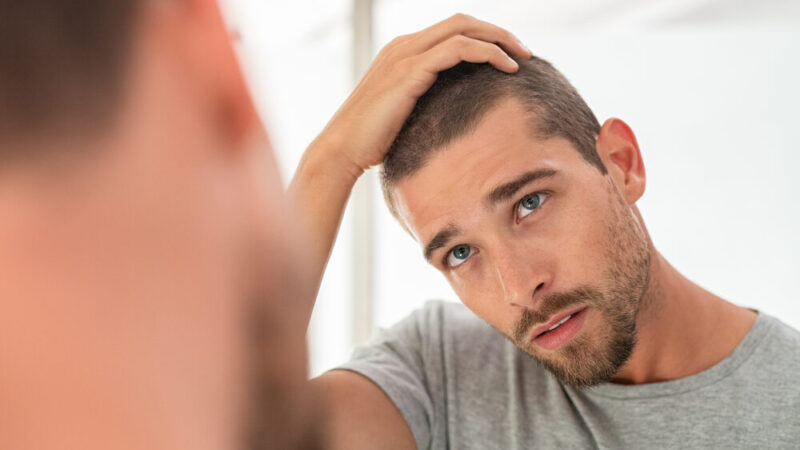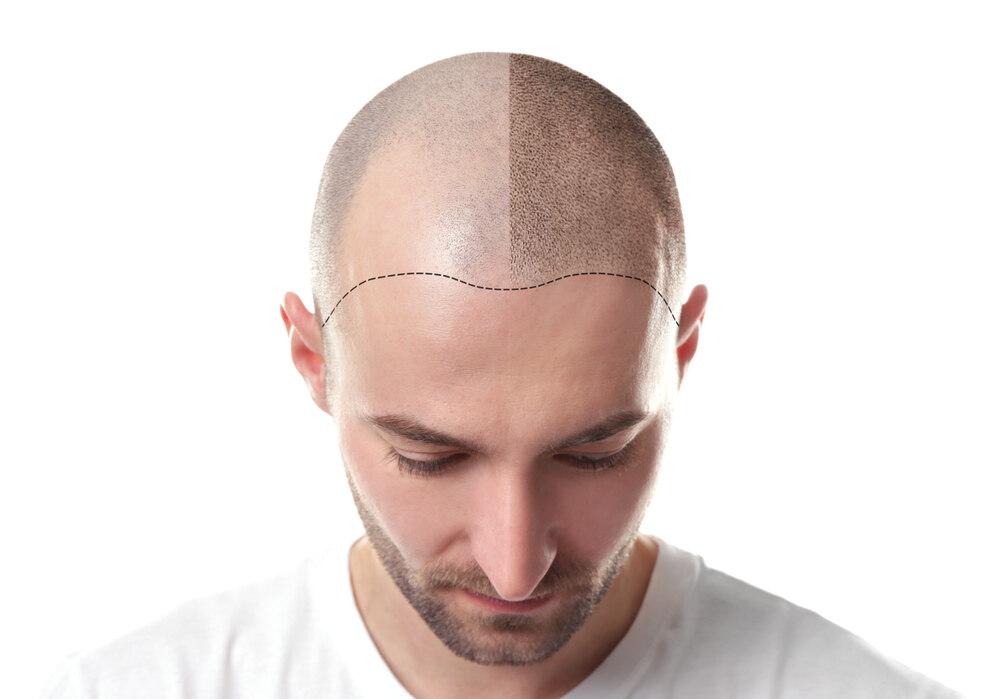
Why More Men Experience Hair Loss Than Women
Before and after hair restoration headshot of a man

Before and after hair restoration headshot of a man

Hair loss is a common experience among men and women around the globe. The reason, perhaps, why good hair transplant clinics are in high demand. However, hair loss is generally more prevalent among men. According to the American Hair Loss Association, approximately two-thirds of men will experience some degree of hair loss by age 35, and 85% will have significantly thinning hair by age 50. In contrast, only around 40% of women face hair loss.

Let’s go over the typical hair growth cycle to understand hair growth and loss.
The cyclical process of hair growth begins with the anagen or growth phase, the active stage where the onion-like shaped hair follicle functions to produce hair fiber. Hair in this stage grows 1 to 2 centimeters a month. About 80-90% of the hair on your head is in this phase, which can last 3-5 years.
When the first phase ends, the second phase, called catagen or transition, begins. This is where the hair follicle becomes smaller, slowing down its activity, which takes around 10 days. About 1 to 3 % of your hair is at this stage.
The next phase, called telogen or dormant, is the stage where growth stops. This is also when club hair or the normal fully grown or mature hair is formed and eventually sheds (in the next phase). Around 10% of your hair is at this stage and can remain in this resting phase for a few weeks to months, depending on its location.
During the final stage, called the exogen or shedding phase, the old hair falls away (often by washing and brushing), and new hair gets ready to grow. Losing 50 to 100 hairs a day is normal; however, if too many hairs are shed simultaneously, it can lead to thinning hair.
Aside from the normal hair growth cycle, certain conditions cause hair loss as well:
Research shows that male pattern hair loss is often hereditary in men, and its likelihood increases as you age. This means that if hair loss runs in your family, it’s likely that you will experience it as well. There may be no cure for hereditary hair loss, but there are treatments to slow down and stop it from progressing.
Another factor affecting hair loss is the male sex hormone, androgen. Hormones play a significant role in hair production, growth, and subsequently, loss. While women experience hair loss during hormonal imbalances such as pregnancy and menopause, these are mostly temporary conditions. However, having naturally higher levels of dihydrotestosterone, the hormone that promotes male development of sexual organs, may cause men to be more susceptible to hair loss.
Furthermore, a person’s genes can affect the scalp’s sensitivity to dihydrotestosterone, which can shorten the hair’s growth phase and cause hair follicles to become smaller, resulting in fewer and finer hairs.
Hair loss may result from certain medications, such as those for blood pressure or gout. Cancer patients undergoing chemotherapy or radiation treatments also temporarily experience hair loss.
When the body undergoes extreme emotional or physical stress or trauma, it can cause excessive hair loss.
Hair loss in men and women differs in the pattern that it occurs. While women experience gradual hair thinning at the crown and widening of the space at the part line, they rarely have prominent bald spots. In contrast, men lose their hair in an M-pattern, where the side of the hairline recedes, and then the hair at the top of the head begins to thin out. This is why baldness in men is often more apparent.
The age when hair loss begins to occur also differs. For women, hair-thinning usually starts to be noticeable after menopause. Meanwhile, for men, receding hair can begin as early as puberty. It also doesn’t help that most men sport shorter hairstyles that make excessive hair loss noticeable.
Baldness is a prevalent concern among a much higher percentage of the male population compared to the percentage of women. Baldness in men can affect not only one’s appearance but also one’s self-confidence. This makes finding a solution an ongoing concern.
Practical solutions to slow hair loss vary, depending on each person’s health condition and the causes of the hair loss in the first place. Aside from managing hair loss, another concern is restoring hair or stimulating growth in the thinning areas.
Oral and topical medication which helps manage hair loss symptoms, such as Minoxidil or Finasteride, is often prescribed. A healthy, balanced diet and lifestyle are also usually recommended to minimize stress and avoid nutritional deficiencies that may lead to hair loss.
However, those with more severe conditions who want a permanent and tangible solution can consider hair transplantation. This process can restore the hairline and allow them to regain a full head of hair.

When getting hair transplantation, the primary concern is that the hair should look natural. The best way to ensure this happens is to consult experts at a reputable hair transplant clinic.
Bangkok Hair Clinic is a hair transplant center that specializes in the most effective hair transplantation techniques. Our surgeons have in-depth knowledge of hair growth and extensive experience in hair grafting and transplants.
For our internationally trained surgeons, hairline design is considered an art. Upon consultation, our surgeons will thoroughly examine your scalp to assess the hairline, donor area, and hair quality. They can then expertly design your new hairline by considering your facial structure and existing hairline.
After a consultation, our surgeons will advise you on which treatments will best address your concerns, such as whether follicular unit transplantation (FUT) or follicular unit excision (FUE) is more suitable for your case—both are effective ways to retrieve and implant hair grafts.
FUT or strip surgery involves removing a narrow strip of scalp from the back of the head or donor area and dissecting the skin under the microscope to produce hair grafts for transplantation. After the strip is removed, the skin is sutured, resulting in a fine, horizontal scar that’s barely noticeable. On the other hand, FUE is an innovative method of harvesting hair grafts by excising individual hair follicles from the donor area so that only small circular scars remain since no sutures are needed.
The patient’s experience is our top priority at Bangkok Hair Clinic, so we try our best to ensure the procedures are as painless as possible. Aside from anesthesia applied by our expert doctors, we use the latest technology to minimize trauma to grafts, such as specially designed implanter pens for direct hair implantation.
Our team of medical staff will also ensure that you get the best after-care for the hair grafts to grow successfully and bear dense, natural-looking results.
Baldness and hair loss in men is a problem that has an effective solution. Restore your youthful looks with a full head of hair. Book a free consultation with our hair transplant specialists.